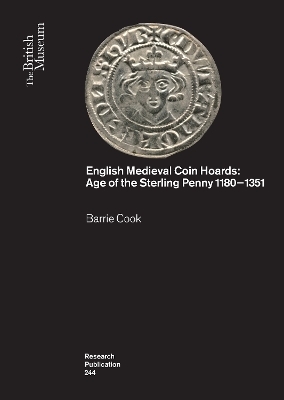
English Medieval Coin Hoards
Age of the Sterling Penny 1180−1351
Seiten
2024
British Museum Press (Verlag)
978-0-86159-244-9 (ISBN)
British Museum Press (Verlag)
978-0-86159-244-9 (ISBN)
- Titel z.Zt. nicht lieferbar (ca. Dezember 2024)
- Versandkostenfrei
- Auch auf Rechnung
- Artikel merken
The late 12th and 13th centuries witnessed complete national recoinages in 1180, 1247 and 1279, with the entire national stock of money reminted. After 1279 this did not happen again, with changes to coinage standards from 1351 onwards creating an environment that instead removed older coin more gradually. The collapse of the Angevin empire, Magna Carta and its ramifications, the creation of Parliament and the commencement of major Anglo-Scottish wars all impacted on how currency functioned across this period.
The aim of this publication is to publish English coin hoards in the context of each of the successive currency periods between 1180 − around the time England arguably became a fully monetised land, with the silver penny under its recently emerged name of sterling − to 1351, when the penny-dominated currency was replaced by a multi-denominational one in both gold and silver.
While the hoards discussed in this publication are seen in their national context, they are also placed firmly in their very local context, identifying relevant local economic and social forces and activities. This approach illuminates the place of money in the lives of the majority of England’s inhabitants, especially as this was the period in which medieval taxation reached its definitive form. With only a handful of exceptions, most of the hoards discussed represent money held by the lower levels of society, above all agricultural workers, whether of free or villein status: this is money in the world of the manor, the village and the parish, not the city, court or government.
The aim of this publication is to publish English coin hoards in the context of each of the successive currency periods between 1180 − around the time England arguably became a fully monetised land, with the silver penny under its recently emerged name of sterling − to 1351, when the penny-dominated currency was replaced by a multi-denominational one in both gold and silver.
While the hoards discussed in this publication are seen in their national context, they are also placed firmly in their very local context, identifying relevant local economic and social forces and activities. This approach illuminates the place of money in the lives of the majority of England’s inhabitants, especially as this was the period in which medieval taxation reached its definitive form. With only a handful of exceptions, most of the hoards discussed represent money held by the lower levels of society, above all agricultural workers, whether of free or villein status: this is money in the world of the manor, the village and the parish, not the city, court or government.
Preface
Introduction
Chapter 1: Short Cross Hoards
Chapter 2: Long Cross Hoards
Chapter 3: Edwardian Hoards
Appendices
Bibliography
Index
| Erscheint lt. Verlag | 30.12.2024 |
|---|---|
| Zusatzinfo | 50 |
| Verlagsort | London |
| Sprache | englisch |
| Maße | 210 x 297 mm |
| Themenwelt | Sachbuch/Ratgeber ► Freizeit / Hobby ► Sammeln / Sammlerkataloge |
| Geschichte ► Allgemeine Geschichte ► Mittelalter | |
| Geisteswissenschaften ► Geschichte ► Regional- / Ländergeschichte | |
| ISBN-10 | 0-86159-244-1 / 0861592441 |
| ISBN-13 | 978-0-86159-244-9 / 9780861592449 |
| Zustand | Neuware |
| Haben Sie eine Frage zum Produkt? |
Mehr entdecken
aus dem Bereich
aus dem Bereich
eine neue Geschichte des Mittelalters
Buch | Hardcover (2023)
C.H.Beck (Verlag)
CHF 53,20


